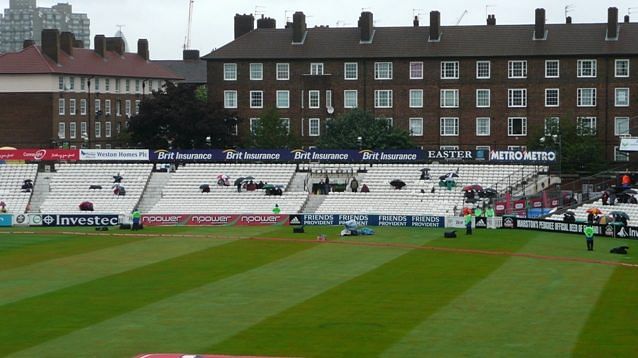New Delhi: The 2019 cricket World Cup in England has been unprecedented — for washed out games, with the latest casualty being the India-New Zealand tie Thursday.
So far, four games have been abandoned, with three called off without a ball being bowled.
To put that in perspective, in 11 previous editions of the ICC Cricket World Cup, only two matches were abandoned before play began — Australia versus Bangladesh at Brisbane in 2015 and the Sri Lanka-West Indies tie that was to be played at the Oval in England in the 1979 World Cup.
The incessant rain and the fear of more matches being rained out has turned the focus on the way grounds are being covered during a downpour in England and Wales. The English groundsmen appear to be using the most basic method to protect the playing surface from being affected by rain.
Called the Lay flat rain cover, this involves the use of covers made of lightweight yet durable materials equipped with handles to drag them. Covers are easy to pull on and off the pitch by a single person even though several groundsmen are often seen rushing with it to ensure pitches are covered quickly. They are ideal for protecting large areas of the square and outfield during a downpour.
ThePrint lists a few other methods that could have been followed.
Also read: This is why Team India played its first World Cup match 6 days after tournament began
All ground coverage (Sri Lankan method)
Under this method, the pitch is primarily covered by a rubber tarpaulin, after which two or more such covers are put onto it. Over 100 people work in unison to ensure that the covers are in place within a minute.
Once the pitch and the surrounding area is protected, the staff divide into separate crews as a supervisor calls out instructions and the remainder of the ground is enveloped in rubber covers within 10 minutes of a downpour.
The advantage of covering the entire playing area is that the ground can be prepared the moment the rain stops.
Super Sopper with a rope
The Super Sopper, invented by Gordon Withnall, is a mechanical mop that can dry cricket pitches as well as tennis courts.
It relies on simple technology. According to the company’s website, a foam pad fitted to a perforated metal drum soaks up all the water and squeezes it into a tank, which is an internal storage system. The water is then carried away and emptied into a drain.
The advantage that this system can boast of is it uses a perforated roller in combination with a storage tank to carry the water away. This is coupled with the use of a long rope to drag and sweep out the remaining water.
Retractable roof
There’s another possibility: The retractable roof. The Marvel stadium in Melbourne has a retractable roof but cricket boards around the world have argued that it is unfeasible and expensive to build such roofs.
Mesh, Drone and Balloon Tent
The Telegraph Sport in 2017 reported that tests are being conducted on new technology in which a mesh canopy will be placed over cricket grounds to allow play to continue if it rains.
The tests are at a very early stage but the England & Wales Cricket Board, along with the MCC, has expressed an interest in the research projects. In this technology, a fine, transparent mesh would be held up by wires suspended through floodlights with a hot air balloon at the centre to lift it up and create a tent-like formation.
However, the issue of run-off water and safety in a high wind scenario is yet to be solved.
Also read: Before you cheer for Indian cricket team this World Cup, thank Jawaharlal Nehru first







Humare yaha theka de diya karo…pure ground pe shaadi wala pandaal baandh denge??